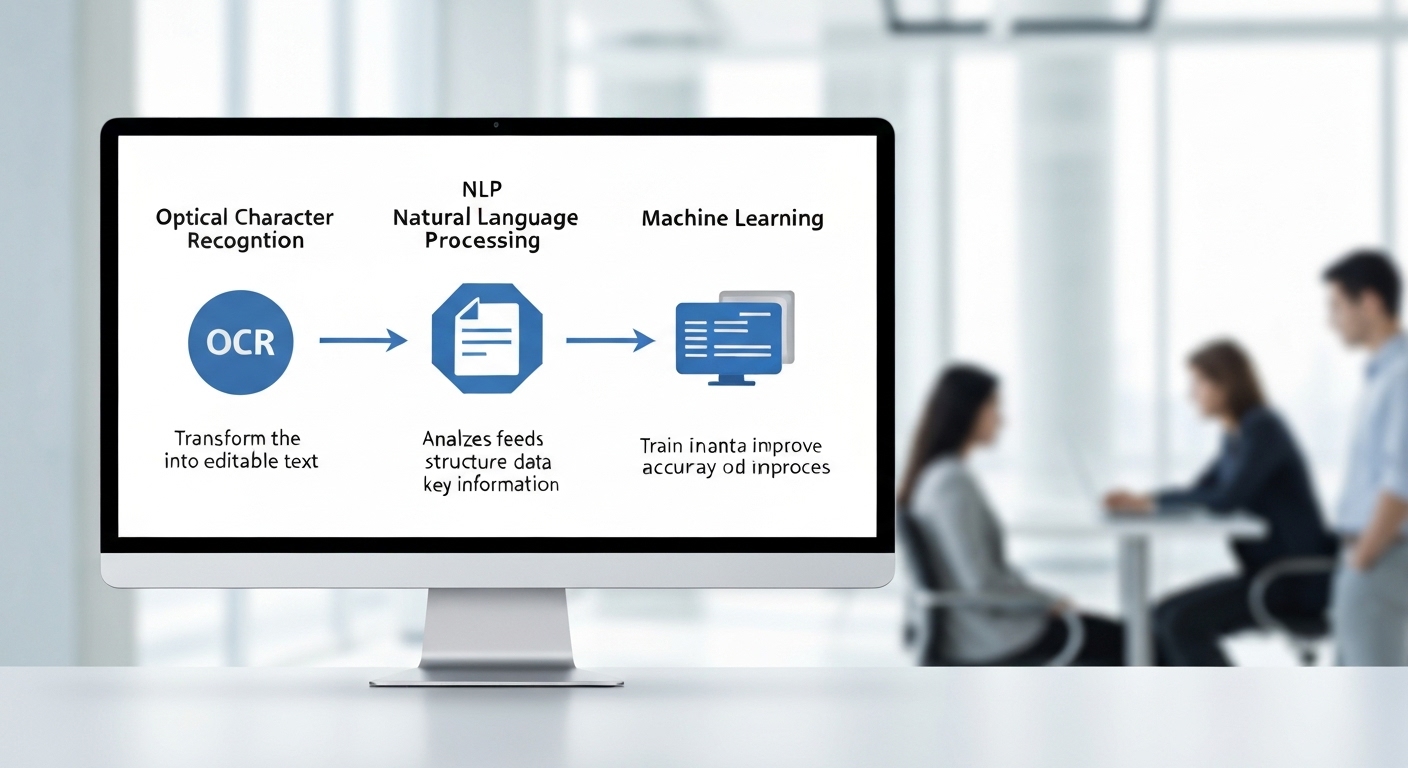Automating Data Entry with AI : A Comprehensive Guide
Automating data entry with ai is revolutionizing how businesses handle information, offering unparalleled efficiency and accuracy.

Understanding the Need for Automating Data Entry with AI
Data entry, a traditionally manual and time-consuming task, is ripe for automation. Human error, slow processing speeds, and high labor costs are significant drawbacks. The increasing volume of data businesses need to manage necessitates more efficient solutions.
Benefits of AI-Powered Data Entry
AI-driven automation brings numerous benefits:
- Increased Accuracy: AI minimizes human error, ensuring data integrity.
- Improved Efficiency: Processes are completed much faster, freeing up human resources.
- Reduced Costs: Automation reduces labor costs and minimizes expenses associated with errors.
- Scalability: AI systems can easily handle increasing volumes of data.
- Enhanced Data Security: Automated systems can implement stringent security measures.
These advantages make a strong case for adopting AI-powered data entry.

Key Technologies Enabling AI Data Entry
Several key technologies underpin the success of automating data entry with AI:
Optical Character Recognition (OCR)
OCR technology converts scanned documents and images into machine-readable text. Modern OCR systems, powered by AI, can accurately extract information even from complex layouts and handwritten text.
Natural Language Processing (NLP)
NLP enables AI systems to understand and interpret human language. This is crucial for extracting relevant information from text-based documents and emails. NLP helps categorize and route data automatically.
Machine Learning (ML)
Machine learning algorithms allow AI systems to learn from data and improve their performance over time. This continuous learning process ensures that the system becomes more accurate and efficient as it processes more data.

Robotic Process Automation (RPA)
RPA involves using software robots to automate repetitive tasks. In data entry, RPA can be used to move data between different systems and applications. RPA complements AI by providing the automation infrastructure.
Implementing AI Data Entry Solutions
Successfully implementing AI data entry solutions requires careful planning and execution.
Step 1: Identify Suitable Processes
Begin by identifying the data entry processes that are most suitable for automation. Look for tasks that are repetitive, rule-based, and high-volume. Common examples include invoice processing, order entry, and customer data management.
Step 2: Choose the Right AI Data Entry Solutions
Select AI data entry solutions that align with your specific business needs. Consider factors such as the types of documents you need to process, the volume of data, and your budget. Different AI data entry tools offer varying levels of functionality and integration capabilities.
Step 3: Data Preparation and Training
Prepare your data for AI processing by cleaning and organizing it. Train the AI models using labeled data to ensure accuracy. This training process is crucial for the AI system to learn how to correctly extract and interpret information.

Step 4: Integration with Existing Systems
Integrate the AI data entry system with your existing business applications, such as CRM and ERP systems. This integration ensures seamless data flow and avoids data silos. Proper integration is key to maximizing the benefits of automation.
Step 5: Monitoring and Optimization
Continuously monitor the performance of the AI data entry system and optimize it as needed. Track key metrics such as accuracy, processing speed, and cost savings. Regularly update the AI models with new data to maintain accuracy and improve performance.
Examples of AI Data Entry in Action
AI data entry is being used across various industries to streamline operations and improve efficiency. Here are a few examples:
Healthcare
AI is automating the processing of medical records, insurance claims, and patient data. This reduces administrative burden on healthcare professionals and improves patient care.
Finance
Financial institutions are using AI to automate invoice processing, fraud detection, and customer onboarding. This improves efficiency and reduces the risk of errors.
Retail
Retailers are using AI to automate order entry, inventory management, and customer service. This improves customer satisfaction and reduces operational costs.
Logistics
Logistics companies are leveraging AI to automate shipment tracking, delivery scheduling, and route optimization. This enhances efficiency and reduces transportation costs.

The Future of AI Data Entry
The future of automating data entry with AI is promising. As AI technology continues to advance, we can expect even more sophisticated and efficient solutions. Here are some trends to watch:
Hyperautomation
Hyperautomation involves automating a wide range of business processes using a combination of AI, RPA, and other advanced technologies. This holistic approach to automation can significantly improve overall business performance.
AI-Powered Data Discovery
AI will play an increasingly important role in data discovery, helping businesses identify and extract valuable insights from their data. This will enable better decision-making and improved business outcomes.
Low-Code/No-Code AI
Low-code/no-code AI platforms will make it easier for businesses to develop and deploy AI data entry solutions without requiring extensive coding skills. This will democratize access to AI and accelerate adoption.
Addressing Concerns and Challenges
While automating data entry with AI offers numerous benefits, it’s important to address potential concerns and challenges:
Data Security and Privacy
Ensure that AI data entry systems comply with relevant data security and privacy regulations. Implement robust security measures to protect sensitive data from unauthorized access. Data breaches are a significant risk, so proactive measures are crucial.
Integration Complexity
Integrating AI data entry systems with existing infrastructure can be complex. Thorough planning and expert guidance are essential to ensure a smooth integration process.
Job Displacement
Address concerns about job displacement by retraining employees for higher-value tasks. Focus on leveraging human skills in areas where AI cannot fully replace human capabilities.
Accuracy and Reliability
While AI minimizes errors, it’s not foolproof. Implement quality control measures to ensure the accuracy and reliability of the data processed by AI systems. Regular audits and validation processes are important.

Conclusion
Automating data entry with ai presents a significant opportunity for businesses to improve efficiency, reduce costs, and enhance data accuracy. By understanding the key technologies, implementing effective solutions, and addressing potential challenges, organizations can unlock the full potential of AI-powered data entry. Embracing AI data entry is no longer a luxury but a necessity for staying competitive in today’s data-driven world. For more insights on artificial intelligence, visit USA.gov.
HOTLINE
+84372 005 899


